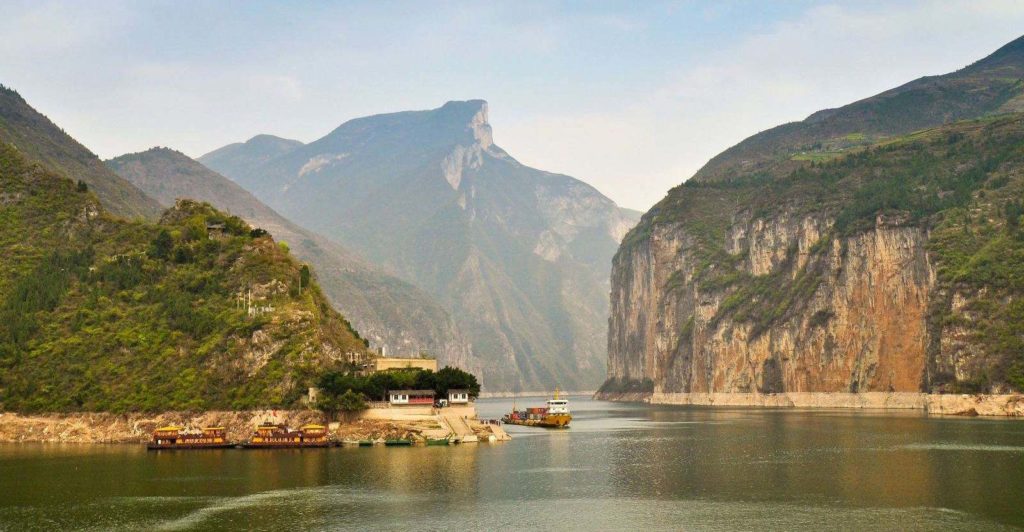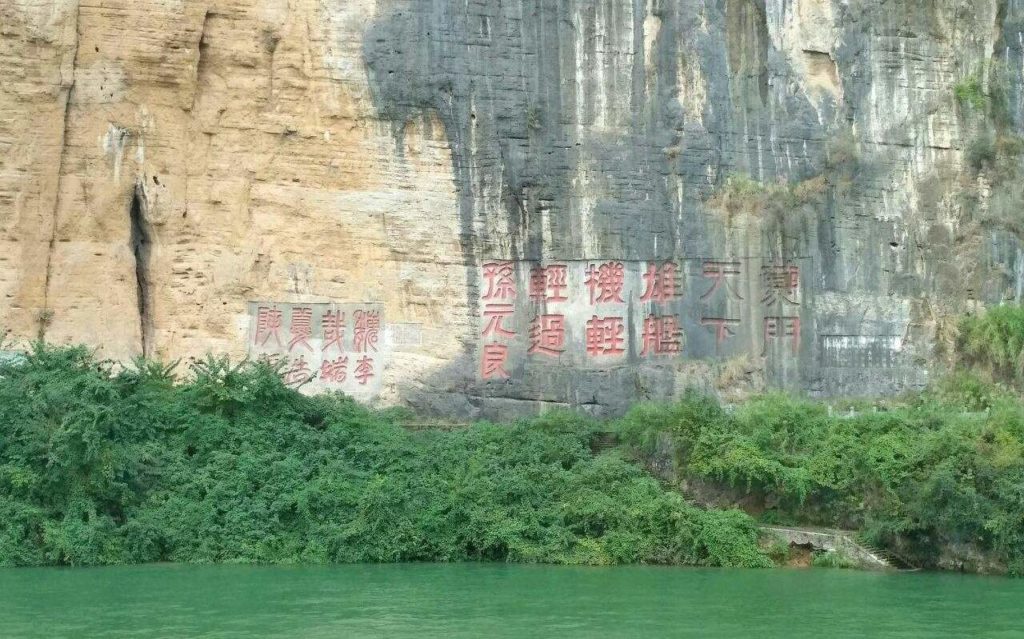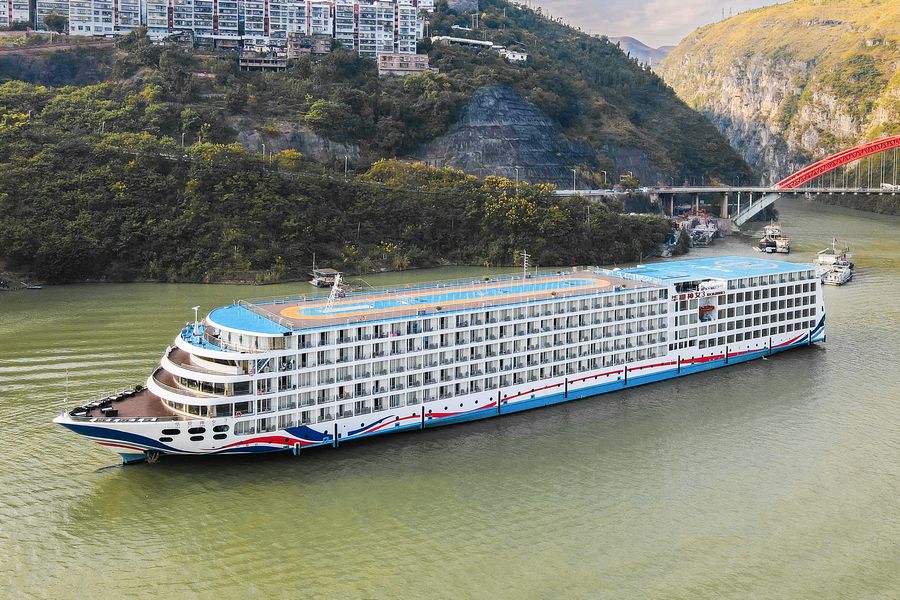The Whitewashed Wall (Chalk Wall) is to be found at Kuimen (Kui Gate) on the cliff face of the White Salt Mountain on the southern bank of the river. It is so named because the cliff face looks whitish and it was once whitewashed in the Song Dynasty. When the ships enter the gorge, what people see at the first sight are four large characters carved on the cliff face. They are “Kui Gate” and “Qutang Gorge“.

Kui Gate
The Whitewashed Wall is several hundred meters wide and several dozen meters high, completely covered with carved inscriptions dating from the Song Dynasty 1,000 years ago. They are all finely executed in different styles of calligraphy, including seal characters, official script, regular script and running hand. Eulogy on the Virtues of Revival of the Song Dynasty, an essay of over 980 words written by the Southern Song calligrapher Zhao Gongsuo, is carved on the cliff wall in a space 4 meters high and 6.78 meters wide. It is a marvelous piece of work.

The two characters of “Qutang Gorge” were written by Zhang Boxiang of the Qing Dynasty 400 years ago, each measuring 1.70 meters in width. They are forcefully executed with matured elegance. The two characters for “Kui Gate” are in the hand of Liu Xinyuan. They are in the style of the official script of’ the Han Dynasty combined with the characteristics of the tablet inscriptions of the Northern Wei Dynasty. All of them are the best works on the cliff wall. There are two inscriptions by patriot general Feng Yuxiang of recent times. One of them reads, “March out of Kui Gate and Wu to drive out the Japanese invaders.”


Contact Us Form